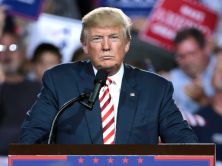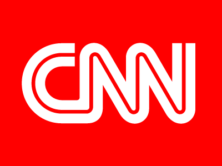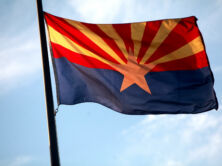
(Credit: London Allen, photos Gage Skidmore, official Secretary of State portrait)
On July 5, two different media organizations announced contradictory trends in the presidential election contest between Hillary Clinton and Donald Trump: “Clinton expands lead over Trump to 13 points: Reuters/Ipsos poll,” and “USA TODAY/Suffolk Poll: Clinton’s lead over Trump narrows to 5 points.”
Neither media story refers to other polls, each treating its own poll as though it alone provides insight into the general election. More importantly, each story misleads the reader about the significance of the results.
Reuters compared its latest poll with one it conducted only a week before, so the trend period was clearly valid (contrast with USA Today below). But the difference in the results was small. The trend showed Clinton leading 44% to 35% on July 1, and by 46% to 33% a week later. Yes, Clinton’s lead had increased from 9 to 13 points, but the difference in each candidate’s level of support was just 2 percentage points. That was hardly a major change, if a change at all, given typical random variations from one poll to the next.
USA Today compares its new poll, showing Clinton leading by 45.6% to 40.4% with a similar poll two months earlier, as though no polls had been conducted in the interim and the only comparison worthwhile reporting is their own dated poll. That earlier poll had Clinton leading by 50% to 39%. The new results point to a 4-point drop for Clinton and a 1-point drop for Trump, since April. But comparing today’s polls with polls in April hardly seems relevant for understanding the dynamics of the election.
Unfortunately, ignoring all other polls is typical for media outlets that produce their own polls. People genuinely interested in what the polls have to show should ignore any single media poll and instead look at the aggregate of polls provided by, among others, HuffPollster and RealClearPolitics. As of July 7, the former showed Clinton leading by 46.1% to 39.5%, while the latter had Clinton up 45.6 to 40.6.
Though both aggregates show a similar lead for Clinton now, they suggest different trends, with the RealClearPolitics graph much more volatile than the HuffPollster graph. Presumably, they will converge as Election Day nears. In either case, they provide more useful information than the announcement of any single poll.






